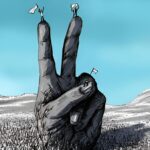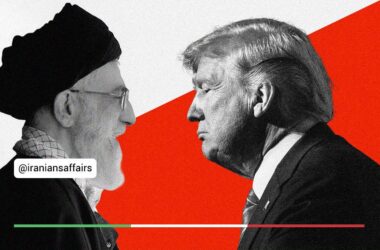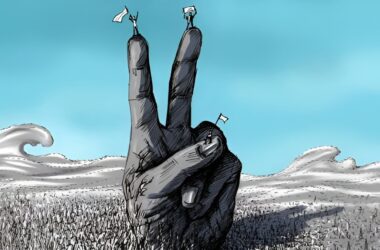Various approaches to leadership creation are among the significant barriers to establishing leadership in the transition to democracy. Similarly, isolating a leader is another serious obstacle to achieving democracy and freedom for the people of Iran.
Although each group may aspire to play a significant role during the transition to democracy, it must ultimately be accepted that temporal and spatial requirements greatly limit the chances for individuals. In Iran’s current context, it appears that the process of leadership formation among opposition forces is fraught with challenges.
Crown Prince Reza Pahlavi gained greater recognition and attention after November 2016, partly due to the inclinations and demands of some protesters in 2017 and 2019. His willingness to take a more active role in the transition, announced in June 2022, created a unique position for him. The protests of September and autumn 2022 arose suddenly, moving rapidly and chaotically, leaving little room for organization, leadership, or solidarity. Similarly, the solidarity movement of winter 2022 proceeded aimlessly, inconsistently, and apolitically, quickly reaching a dead end. However, Pahlavi’s strong character and years of growing popularity in Iran have positioned him uniquely by 2024, with no other figure possessing a comparable platform for advancing the national revolution. His recent announcement a few days ago has further solidified his position and status.
Within Iran, Mir Hossein Mousavi remains under house arrest and is the only individual since 2009 who has briefly assumed leadership of the opposition. Beyond him, some social and media activists have been suggested by their circles for transitional leadership. However, experience has shown that widespread attention does not translate into tangible advantages for them. Beyond the restrictions of activism within Iran, they lack experience in political matters.
Domestic political forces remain either stuck between reform and revolution or lack the necessary visibility and resources. Opposition figures abroad have largely not assumed the role of political leadership. The People’s Mojahedin Organization of Iran is the only group with a unified leadership structure. While they might have more appeal than scattered Marxist groups, it is unlikely they will gain significant traction or support for some time. Other groups either lack capacity or prioritize cultivating a public (media or celebrity) persona. Models of solidarity and coalition-building have repeatedly failed in Iran, showing no signs of feasibility.
Perhaps ten years ago, the search for leadership to guide Iran’s transition to democracy might have pointed to different candidates than today. Similarly, potential candidates in a few years may differ from those currently available.
Considering Iran’s situation and the experiences of other countries attempting transitions, it is worth revisiting whether ideal leadership can be crafted or whether one must embrace pragmatic leadership.
Most research and studies on factors influencing transitions and revolutions in recent decades emphasize the advantages of having opposition leadership. A recognized leadership figure can facilitate many organizational and communicational challenges. Even in many models focused on group solidarity for transition, consensus on an individual for transitional leadership is often the goal.
One of the main challenges for both successful and unsuccessful countries in their transitions has been achieving this leadership. While creating suitable conditions for transition, necessary organization, discourse-building, and consensus on desirable transitional features have posed challenges, overcoming the leadership obstacle often resolves many issues.
However, does the ideal leader exist? Many believe it is still possible to craft a charismatic leader during revolutionary processes, searching for figures like Gandhi or Mandela. Yet, even those leaders were not universally accepted or supported by all opposition forces during their leadership. Most revolutionary leaders of the past century did not even represent 50% of the opposition.
Several unexamined and immature notions seem to hinder the acceptance of opposition leadership in Iran.
The first misconception about opposition leadership is that participation of groups in the transition does not necessarily equate to their involvement in leadership. Participation can occur in processes of consensus-building and persuasion to agree on principles and programs, but it can also rely on trusting a single group to navigate the transition. Some forces may not yet be ready or may not see conditions as conducive, but they can participate in the transition without limiting the opportunities and possibilities of others, thereby fostering trust for future opportunities.
It is sometimes assumed that opposition leadership must result from universal consensus. However, in many cases, leadership plays the role of forging consensus among the opposition.
Persuasion often follows the creation and identification of leadership.
Perhaps one of the most critical issues is the “representation challenge” — whether opposition leadership represents all groups or merely a determined subset. Given the complexities of identifying representation in closed societies like Iran, this issue becomes even more complicated. However, even in countries with better conditions, revolutionary and transitional leaders did not represent everyone. It suffices that they were in a comparatively better position than others, possessed the limited and necessary political and organizational capabilities, and garnered both domestic and international acceptance. In addition to leading struggles, they needed to manage discourse, drive media momentum, foster domestic and international consensus, organize effectively, and engage in critical negotiations and communication.
It is also crucial to remember that revolutionary leadership is highly time-sensitive. Unique opportunities arise that must be seized; otherwise, the revolutionary process is destined to fail.
Given Iran’s unique circumstances and the analysis of forces and figures, two primary challenges over the coming months appear to be the security projects of “leader-creation” and “leader-isolation.” Previously, a think tank on Iranian issues addressed the “isolation of the Crown Prince,” likening it to efforts by all regimes to incapacitate and delegitimize political leaders through attacks on their associates or fostering idealistic and impractical discourse and strategies. This issue manifests in various forms and dimensions.
Regarding leader-creation, two key aspects stand out: time management to eliminate opportunities and preventing public acceptance for consensus-building and operational strengthening of the transition program, or what is recognized as the national revolution in Iran.
This leader-creation effort sometimes directly emphasizes particular figures or promotes broader participation in leadership roles. Such participation, however, could occur in executive processes, mechanisms and principles determination, or at a supervisory level. Indirectly, this might emphasize domestic leaders or focus on narratives of reconciliation or confrontation with the regime.
Given the manipulation of public figures and media dominance, the regime and anti-revolutionary forces appear increasingly focused on promoting various figures to prevent the Crown Prince, Reza Pahlavi, from gaining a leadership opportunity. This comes at a time when global opportunities for aligning with Middle Eastern changes and transformations in Iran are emerging.







